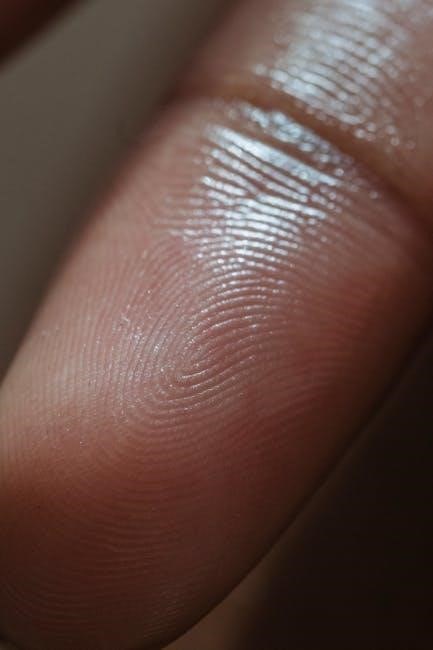Angle Guide Knife Sharpening⁚ A Comprehensive Guide
Mastering the art of knife sharpening involves precision and consistency. Angle guides are invaluable tools that ensure accurate sharpening angles‚ leading to sharper‚ longer-lasting blades. This guide explores various angle guide types‚ usage techniques‚ and recommended products for achieving optimal results.
Choosing the Right Angle Guide
Selecting the appropriate angle guide hinges on several key factors. Consider the types of knives you’ll be sharpening; different knives (e.g.‚ kitchen knives‚ pocket knives) often benefit from varying angles. The material of the guide is also crucial; durable materials like steel ensure longevity and accurate angle maintenance. Ease of use is paramount‚ particularly for beginners; some guides offer simpler clamping mechanisms than others. Finally‚ assess the guide’s adjustability; the ability to alter the angle is beneficial for accommodating various blade profiles and sharpening preferences. A well-chosen angle guide significantly enhances the sharpening process‚ offering both precision and efficiency.
Types of Angle Guides⁚ An Overview
Several angle guide types cater to diverse sharpening needs. Clamp-on guides attach directly to the knife’s spine‚ maintaining a consistent angle during sharpening. These are popular for their ease of use. Standalone guides‚ like the SHARPAL 196N Angle Pyramid‚ provide a fixed angle reference without directly clamping to the knife‚ offering flexibility for various blade sizes. Some systems incorporate angle guides as part of a larger sharpening apparatus‚ such as the Benchstone Knife Sharpener. Finally‚ DIY options‚ often constructed from wood‚ provide a customizable and cost-effective approach. The choice depends on individual preferences‚ sharpening experience‚ and the range of knives requiring attention. Each type offers advantages depending on the user’s skills and requirements.
Using Angle Guides for Different Knife Types
Angle guide selection and usage vary based on knife type and blade geometry. Kitchen knives‚ often sharpened at 15-25 degrees‚ benefit from guides offering this range. Pocket knives‚ typically sharpened at a steeper angle (20-25 degrees)‚ may require guides that accommodate this. For blades with complex grinds‚ like hollow or recurve grinds‚ more flexible or adaptable angle guides might be necessary. Consider the blade length when choosing⁚ smaller guides are better suited for smaller blades‚ while larger guides are better for larger ones. Always prioritize a guide that allows for consistent contact between the blade and the sharpening stone. Improper guide use can lead to uneven sharpening and damage to the blade.
Sharpening Techniques with Angle Guides
Achieving a consistently sharp edge requires maintaining a precise angle throughout the sharpening process. Angle guides help maintain this angle‚ ensuring even sharpening across the blade’s length; This section details effective techniques for using angle guides with various knife types and blade grinds.
Maintaining Consistent Angle During Sharpening
Maintaining a consistent angle is crucial for even sharpening and a durable edge. Begin by securely attaching the angle guide to your knife’s spine. Gentle‚ even pressure is key; avoid pressing too hard‚ which can damage the blade or cause uneven sharpening. Use smooth‚ controlled strokes‚ keeping the angle guide firmly against the sharpening stone. Maintain constant contact between the blade and the stone throughout each stroke‚ ensuring the angle remains consistent. For complex blade geometries‚ like a recurve‚ you may need to adjust your technique‚ using multiple passes with the angle guide to achieve the correct angle across the entire blade. Regularly inspect your progress to ensure even sharpening and address any inconsistencies immediately. Remember‚ patience and practice are key to mastering consistent angle maintenance during sharpening.
Sharpening Different Blade Grinds
Different blade grinds require slightly different sharpening approaches‚ even with an angle guide. A flat grind‚ common on many kitchen knives‚ allows for straightforward sharpening with the angle guide maintaining a consistent angle along the entire blade. However‚ a hollow grind‚ often found on higher-end knives‚ presents a more nuanced challenge. The curved blade profile requires more care to ensure the angle guide maintains consistent contact across the concave surface. You might need to use shorter‚ more controlled strokes to avoid slipping. Similarly‚ a recurve blade‚ with its curved edge‚ necessitates adjusting the angle guide’s position along the blade’s length to maintain a uniform angle throughout the sharpening process. Always consult your knife’s manufacturer’s recommendations for specific sharpening angles and techniques‚ as some blade types might require specialized methods beyond basic angle guide use. Practice on less valuable knives first to perfect your technique before tackling your prized blades.
Troubleshooting Common Sharpening Issues
Even with an angle guide‚ sharpening issues can arise. A common problem is inconsistent sharpness along the blade‚ often caused by uneven pressure or inconsistent angle maintenance. To remedy this‚ practice maintaining even pressure throughout each stroke and frequently check the angle guide’s alignment. Another issue is creating a rounded edge instead of a sharp one. This usually results from using too much pressure or sharpening at too steep an angle. Reduce pressure and double-check your chosen angle against the guide. If the blade feels dull after sharpening‚ you might be using the wrong angle or an inappropriate sharpening stone grit. Refer to your knife’s manufacturer recommendations or online resources to determine the proper angle and grit for your knife type and material. Lastly‚ if the edge feels damaged or chipped‚ it’s crucial to carefully evaluate your sharpening technique and potentially switch to a finer grit stone to refine the edge. Remember‚ patience and practice are key to mastering knife sharpening.
Recommended Angle Guides
This section reviews popular angle guides‚ including the Wedgek AGM Angle Wedges and the SHARPAL 196N Angle Pyramid‚ highlighting their features‚ benefits‚ and user feedback for informed purchasing decisions.
Wedgek AGM Angle Wedges⁚ A Detailed Review
The Wedgek AGM Angle Wedges are praised for their accuracy and ease of use in achieving consistent sharpening angles. Designed for various blade styles‚ they offer angles ranging from 10 to 20 degrees‚ catering to diverse sharpening needs. Crafted from durable materials‚ these wedges provide reliable performance over extended use. User reviews consistently highlight their effectiveness in improving sharpening precision. Many users report significantly sharper knives after incorporating the Wedgek AGM Angle Wedges into their sharpening routine. The straightforward design makes them suitable for both novice and experienced sharpeners. Their mid-range price point makes them an accessible option for those seeking improved sharpening accuracy. The positive feedback consistently points to the wedges’ contribution to achieving professional-level sharpening results at home. Ultimately‚ the Wedgek AGM Angle Wedges represent a reliable investment for anyone serious about maintaining optimally sharp knives. Their consistent performance and user-friendly design make them a top choice for many.
SHARPAL 196N Angle Pyramid⁚ Features and Benefits
The SHARPAL 196N Angle Pyramid stands out as a versatile angle guide for whetstone sharpening. Its unique pyramid shape offers four readily accessible sharpening angles⁚ 14‚ 17‚ 20‚ and 25 degrees. This variety caters to a wide range of knife types and sharpening preferences. Constructed from high-quality‚ durable materials‚ the SHARPAL 196N ensures long-lasting performance. The pyramid’s design provides stability during sharpening‚ minimizing the risk of slippage and maintaining consistent angle throughout the process. Users appreciate its ease of use‚ making it suitable for both beginners and experienced sharpeners alike. The consistent angles produced by the SHARPAL 196N contribute to improved blade sharpness and overall performance. Its compact design facilitates convenient storage and portability. Customer reviews frequently cite the SHARPAL 196N’s accuracy and effectiveness in achieving a consistently sharp edge‚ enhancing both the cutting efficiency and lifespan of knives. The tool’s versatility and user-friendliness make it a popular choice among knife enthusiasts.
DIY Angle Guide Options
Creating a personalized angle guide offers a cost-effective and fulfilling alternative to commercially available options. A simple DIY guide can be constructed from readily accessible materials like hardwood (oak‚ maple‚ or walnut are ideal). Precise measurement is key; use a protractor or angle finder to mark the desired angle (e.g.‚ 20 degrees) onto the wood. A fine-toothed saw ensures clean cuts‚ while sandpaper (various grits) smooths the surface for a polished finish. Clamps secure the wood during cutting and sanding. Safety precautions‚ including eye protection and gloves‚ are essential during the process. The dimensions should accommodate your knives‚ and the design can be as simple as a rectangular block with one angled end serving as the sharpening reference. A protective finish‚ such as food-grade mineral oil or varnish‚ enhances durability and water resistance. Testing the accuracy with a protractor after construction is crucial before using it for sharpening. Remember to always prioritize safety and precision when crafting your DIY angle guide.
Benefits of Using Angle Guides
Angle guides dramatically improve sharpening accuracy and consistency‚ resulting in sharper blades and enhanced efficiency. This translates to less time spent sharpening and better overall performance of your knives.
Improved Accuracy and Consistency
Maintaining a consistent sharpening angle is crucial for creating a sharp‚ durable edge. Without an angle guide‚ achieving this consistency is challenging‚ often resulting in uneven sharpening and a dull blade. Angle guides act as a precise reference point‚ ensuring every stroke on the sharpening stone maintains the ideal angle. This leads to a more uniform edge geometry across the entire blade length‚ maximizing sharpness and cutting performance. The elimination of guesswork and the consistent angle provided by a guide lead to significantly improved results‚ even for novice sharpeners. Many users report a marked improvement in their sharpening skills after incorporating an angle guide into their routine. The precise angle control provided by these tools translates to a sharper‚ more efficient blade‚ enhancing both the ease and effectiveness of the sharpening process. This increased accuracy leads to a significant reduction in the time and effort required to achieve a razor-sharp edge‚ a benefit appreciated by both experienced users and beginners alike. The resulting improved blade performance significantly outweighs the minor investment in an angle guide.
Enhanced Sharpening Efficiency
Angle guides dramatically improve sharpening efficiency by minimizing wasted effort and strokes. Without a guide‚ achieving a consistent angle requires repeated adjustments and checks‚ slowing down the process considerably. The consistent angle provided by a guide allows for more focused‚ deliberate strokes‚ leading to faster sharpening. This increased efficiency is particularly noticeable when sharpening multiple knives or when dealing with thicker blades that require more passes. The elimination of guesswork and the reduced need for correction strokes translates into significant time savings. Users often report a substantial decrease in the overall time spent sharpening‚ allowing for more efficient use of their time. Moreover‚ the precise angle control provided by the guide minimizes the risk of mistakes‚ reducing the need for corrective actions that would otherwise further extend the sharpening process. This ultimately results in a more streamlined and productive sharpening experience‚ irrespective of the user’s skill level. The enhanced efficiency afforded by angle guides makes sharpening a more manageable and less time-consuming task.


